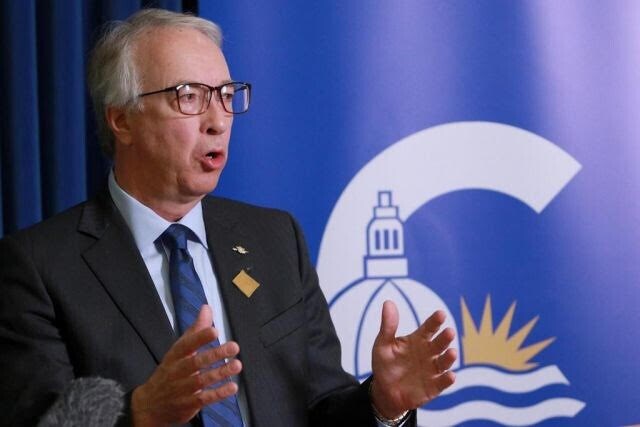In the summer of 2008, Carole James capitalized on then-premier Gordon Campbell’s aloof style, at one point surpassing the BC Liberals in voting intention.
In the end, the emotional connection necessary for change did not arrive. Campbell won another majority in May 2009, and the BC NDP finished with 35 seats—up from the 33 they held.
It’s becoming more evident that Conservative Party of BC leader John Rustad is where James was in 2008: Voters are giving his party a long hard look, but he is not yet perceived as the deliverer of change.
The BC NDP remains in first place with the support of 40 per cent of decided voters (down two points in four weeks), followed by the BC Conservatives with 33 per cent (up one point). The BC Greens are in third place with 15 per cent (up three points), and BC United is in fourth place (11 per cent, down one point).
Competitive provincial parties usually hold on to at least three in five voters from their previous election. While the BC NDP and the BC Greens are solidly ahead of this retention threshold (at 68 per cent and 73 per cent, respectively), only 29 per cent of voters who backed the BC Liberals in 2020 are staying with BC United. Almost half (48 per cent) are voting for the BC Conservatives.
BC United is also last on voting consideration (34 per cent, up one point). The BC NDP remains ahead at 54 per cent. Momentum is on the side of the BC Conservatives (46 per cent, up four points) and the BC Greens (38 per cent, up three points).
We continue to see two in five British Columbians (40 per cent) say housing, homelessness and poverty is the most important issue facing the province, followed by health care (20 per cent), the economy and jobs (17 per cent), crime and public safety (eight per cent) and the environment (five per cent).
More than half of British Columbians (53 per cent, down one point) approve of David Eby’s performance as premier. The lowest-ranked leader is Kevin Falcon (32 per cent, up one point), while the numbers are better for Sonia Furstenau of the BC Greens (39 per cent, up four points) and Rustad (40 per cent, up three points).
When asked who would make the “best premier,” 28 per cent of British Columbians chose Eby. Rustad is a distant second at 14 per cent, followed by Falcon (13 per cent) and Furstenau (11 per cent).
Eby maintains a commanding lead over all challengers on being the best person to manage 14 different issues. His highest numbers are on health care (30 per cent) and education (28 per cent). Rustad’s top issues are the economy and jobs (17 per cent, with Eby at 26 per cent) and crime and public safety (18 per cent, with Eby at 23 per cent). The gap suggests that voters have not established an emotional connection with the BC Conservative leader.
There is no magic number that guarantees that a party will form government after a provincial election is over. The rise of the BC Conservatives makes these forecasts even more complex. In any case, the share of the vote for the BC NDP has dropped by eight points since September. The BC Conservatives have gained 13 points, but their leader remains a mystery for just over one in five British Columbians.
As the pre-campaign period looms, the two main leaders face different challenges. Rustad must find a way to turn window-shoppers disappointed with the current state of affairs into believers in his vision. Eby, with the advantage of incumbency, needs to show the electorate—particularly the 32 per cent of 2020 BC NDP voters who are looking elsewhere—why change is not desirable at this time.•
Mario Canseco is president of Research Co.
Results are based on an online study conducted from June 17-19, 2024, among 800 adults in B.C. The data has been statistically weighted according to Canadian census figures for age, gender and region in B.C. The margin of error is plus or minus 3.5 percentage points, 19 times out of 20.
Editor's note: This column originally mistated the number of seats held by the BC NDP prior to the 2009 provincial election. They held 33 seats, not two. They held two seats prior to the 2005 election.







